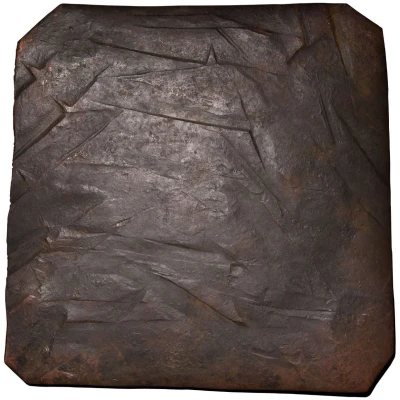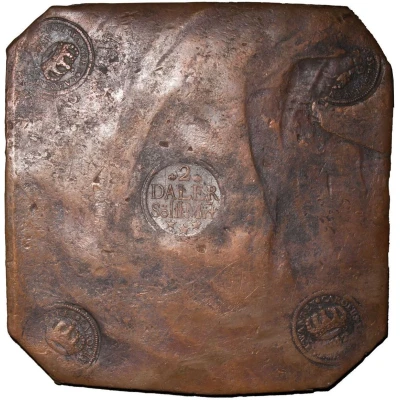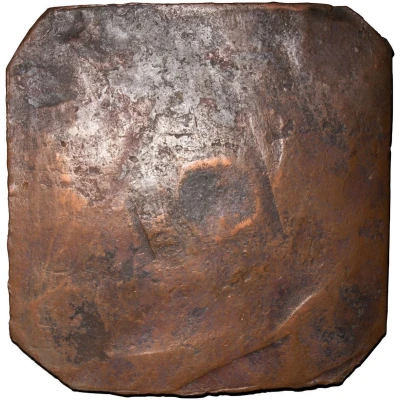


2 Daler Silvermynt - Charles XII Kengis
| Copper | 2725 g | - |
| Issuer | Sweden |
|---|---|
| King | Charles XII (Karl XII) (1697-1718) |
| Type | Standard circulation coin |
| Years | 1700-1701 |
| Value | 2 Daler SM = ⅔ Riksdaler |
| Currency | Copper Plate Money (Daler SM equivalent; 1644-1776) |
| Composition | Copper |
| Weight | 2725 g |
| Size | 220 × 200 mm |
| Shape | Square (irregular) |
| Demonetized | Yes |
| Updated | 2024-10-07 |
| Numista | N#183662 |
|---|---|
| Rarity index | 97% |
Comment
Copper from the coin was extracted from Svappavaara. The center stamp 'AIR' stands for the the mine's founders Abraham and I(J)akob Reenstierna. The coin is only known in a few specimen.
In november 1674 the brothers Abraham and Jakob Reenstierna from Brabant received allowance to mint copper plate money at Kengis mill. The annual production of coins would reach around 14.6 tons of copper plate money the years 1675-77, 1680-85 and 1687-89 along with preserved plate money from 1693 and 1700-02. Only nine of the thousands of copper plates have survived.
The 2 Daler SM Kengis copper plate from 1700 is quite special. First of all if you observe the dates on the corner stamps they look odd. In the legend you will notice that it indicates Carolus XI (Karl XI) instead of Carolus XII (Karl XII). What they have done is that they used an old coinstamp from Karl XI and afterwards engraved the year 1700 onto the plate money. The updated coinstamp with the correct sovereign got put in use for the 1701 2 Daler SM Kengis copper plates. It is said that only one single copper plate for each year still exists for the Karl XII 2 Daler SM Kengis copper plates.
Interesting fact
One interesting fact about the 2 Daler Silvermynt - Charles XII (Kengis) 1700-1701 from Sweden is that it was minted during a time of great economic and political change in Sweden. The coin was issued during the reign of Charles XII, who was known for his military conquests and his efforts to modernize the Swedish economy. The coin's design features an image of Charles XII on one side and the Swedish coat of arms on the other, symbolizing the country's growing power and influence in Europe during this time.

